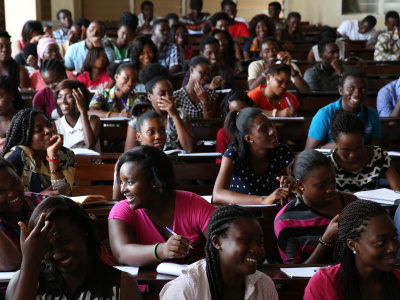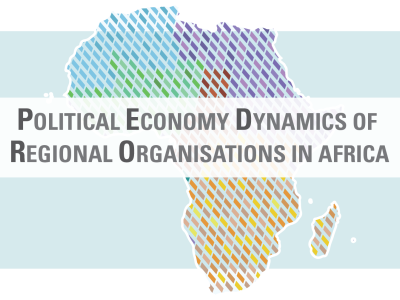
Meaningful youth participation: An urgent call for change in European processes
European bodies have an urgent task in shifting their perspectives on young people: seeing them through multiple lenses as dynamic and diverse constituencies rather than as a uniform group of beneficiaries. New ways must be found to bring the voices of youth movements into formal spaces, which still remain where the most important decisions are taken.
Many of Europe’s most impactful protests in recent years, relating to human rights, democracy and good governance, have been driven and supported by a key demographic: the youth. From the #FridaysForFuture to the #MeToo marches, young Europeans are consistently at the forefront of movements that impact policies and fire up public dialogue. While youth engagement in democratic life keeps increasing, multiple factors limit their meaningful participation in European processes and spaces. Still, solutions are here – with young people leading the way.
Youth: Unity and diversity
Approximately 74 million young people (ages 15-29) live in the EU, making up 16.6% of the Union’s population. The 2019 Eurobarometer indicates that young people’s interest and engagement in democratic life have been growing since 2014. Interestingly, young people distinguish themselves from older generations by spearheading action on different justice and development issues – with climate justice and health rights being top priorities.
The narrative of the youth as a homogenous group has translated into a solid advocacy block for youth representation at the European level – for example, in the renewed EU Youth Strategy 2019-2027. At the same time, it dismisses many of the intricacies, nuances and distinctions that exist within this demographic. Young people’s unique backgrounds, lived experiences and ambitions impact the issues they are interested in and advocate for. For example, the 2019 Eurobarometer indicates that young people in full-time education are more likely to be interested in environmental issues, while those not in full-time education are more concerned with socio-economic inequalities. Naturally, other distinctions can be found among different cross-sections of the youth.
More importantly, differences between young people heavily impact their level of participation in formal structures. Particularly, marginalised and disadvantaged youths have less access to engage in processes that impact their lives. This creates an imbalance favouring more privileged voices, leaving behind the concerns of those facing intersectional challenges on the margins of society.
Formal structures stand in the way
Traditionally, youth participation and engagement have been viewed through young people’s engagement in existing formal institutions and processes. It is this aspect that determines the success of their representation. In reality, how young people mobilise and prefer to work with national and European policymakers differs significantly from this. `
While many youth foster a strong ‘European’ identity, young people and youth-led organisations have voiced unease with the European-level institutions and processes, feeling these are unfit for their participation. Here, hierarchical structures, inaccessible processes, lacking transparency and shrinking spaces for civil society collaboration have been noted as key areas of concern.
Although youth-led civil society organisations still play an important role in championing youth issues, more and more organic movements have taken root among young people at the local level. They work closely with grassroots movements or create informal networks that shape not only their agendas but also the frameworks in which they advocate for them. This novel approach has brought a level of flexibility that has made youth-led movements agile enough to adapt to the dynamic policy and development landscape. This ability to shift and transform can be viewed as a survival strategy and has been particularly beneficial during the COVID-19 pandemic.
COVID-19: Challenge or opportunity?
Whereas before COVID-19, youth movements could be found on the streets, they have now been pushed indoors and online. For those that find their way to these online platforms and can navigate these spaces, there are exciting opportunities for leveraging their knowledge and accessing technology. For example, young people can now engage in processes that would otherwise take place far away – in conference halls and meeting rooms they would not be able to enter.
However, the pandemic has pushed other young people further into the shadows. First, youth issues and youth engagement have fallen on the priority list of many national and European bodies during the pandemic. This has sidelined the youth and their proposals for short and long-term solutions for sustainable development. More importantly, it has widened the existing gap between young people and the institutions put in place to serve them. Second, governments’ approaches to the pandemic have decreased trust among young people, especially the most marginalised groups. For example, this became clear in the summer and fall of 2020, when young LGBTI+ in Poland faced heavy pushback on their rights led by an opportunistic government amid the pandemic. Third, while older generations make up most COVID-19 cases, young people are facing severe mental and physical health issues, which break down existing youth networks and make it harder for them to advocate for themselves. Last, young people will likely bear a disproportionate amount of the long-term consequences of the pandemic, due to youth unemployment, disruptions of education, financial insecurity, and other social and economic impacts.
Moving forward stronger
While this all paints a relatively grim picture for the future of young people, the pandemic can be a turning point for how European governments, institutions and citizens view youth participation. European bodies have an urgent task in shifting their perspectives on young people: seeing them through multiple lenses as dynamic and diverse constituencies rather than as a uniform group of beneficiaries.
New ways must be found to bring the voices of informal youth movements into formal spaces, which still remain where the most important decisions are taken. Shifting away from a vertical structure, breaking down bureaucratic barriers, providing adequate funding and building an environment that fosters collaboration among and with civil society organisations, are just a few items on the to-do list.
As cliché as it sounds, this ‘new normal’ can offer a path towards a more promising future for all, but only if young people are heard and given the space to lead this transformation from the front.
About the author
Sanne Thijssen is the founder of Shake The Dust, a consulting, co-creation and communication organisation for youth engagement. She is a consultant on youth participation and sexual and reproductive health and rights. Twitter: @SanneThijssen_ |@letshakethedust
Read the full magazine issue
This video interview appears in the youth edition of ECDPM's Great Insights magazine – check out the full issue or the other articles and multimedia below.











